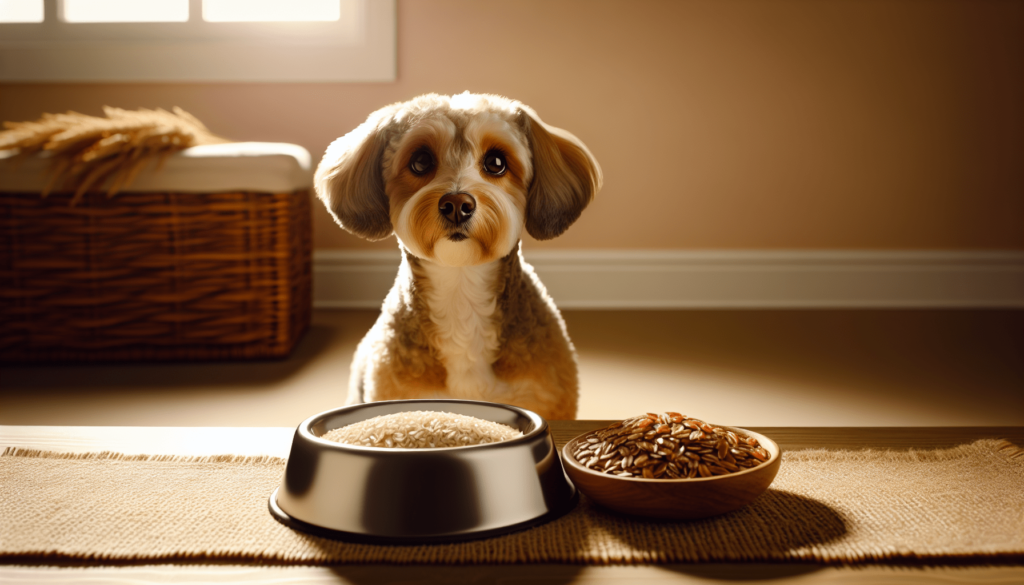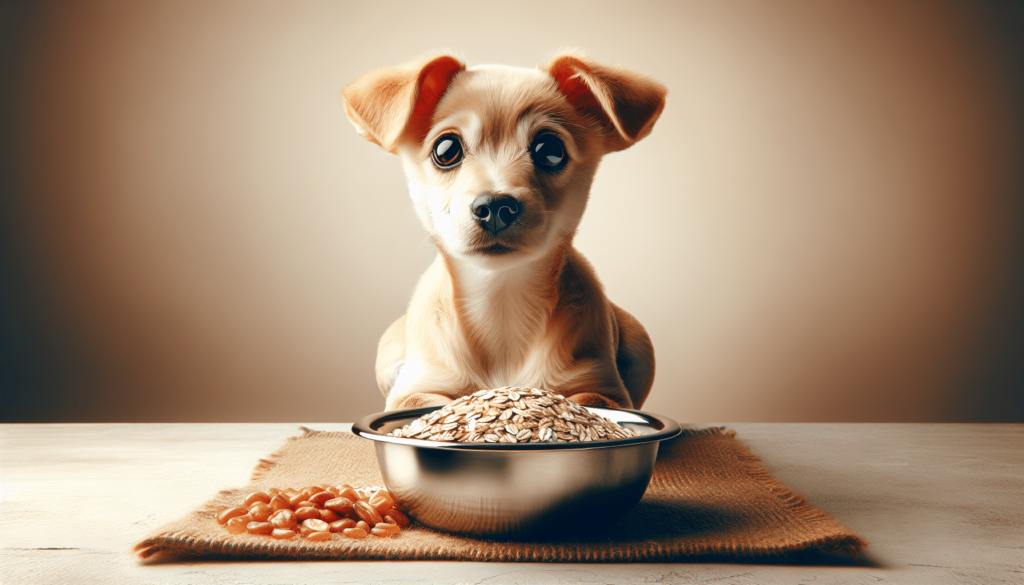Have you ever found yourself wondering if dogs can eat grains like rice and oats? If you’re anything like me, your furry friend’s diet is just as important to you as your own. In feeding our canine companions, it’s essential to navigate the complex landscape of what is healthy and what isn’t. Many owners are curious about how safe and beneficial grains are for their dogs. Can our pets benefit from common grains such as rice and oats, or could they be harmful?

Understanding Canine Nutrition
Before diving into specifics about grains like rice and oats, it’s important to understand what a balanced diet looks like for dogs. Just like humans, dogs need a variety of nutrients to maintain their health. This includes proteins, fats, carbohydrates, vitamins, and minerals. Each component plays a role, and balance is key to promoting longevity and vitality in our pets.
The Role of Carbohydrates in a Dog’s Diet
Carbohydrates can often be controversial in discussions about dog nutrition. Some believe that carbs are unnecessary and that dogs can thrive on protein and fat alone, mimicking a more ancestral diet. However, carbohydrates provide energy and can be a valuable source of fiber and essential nutrients when chosen wisely.
The Importance of Proteins and Fats
While carbohydrates are debated, protein and fat are undeniably crucial for dogs. Proteins provide essential amino acids necessary for tissue repair, growth, and immune function. Fats offer concentrated energy, assist in cell function, and help keep a dog’s coat shiny and skin healthy. As we consider grains like rice and oats, it’s vital to remember they shouldn’t replace the primary sources of protein and fat in your dog’s diet.
Can Dogs Eat Grains Like Rice and Oats?
When exploring the idea of incorporating grains such as rice and oats into a dog’s diet, it’s natural to ponder their benefits and potential drawbacks. Rice is often one of the first grains introduced to puppies due to its digestibility. Meanwhile, oats are celebrated for their nutritional content. But how do these grains fit into canine nutrition?
Benefits of Rice in a Dog’s Diet
Rice is a staple in many parts of the world, cherished for its digestibility and neutral taste. Dogs can benefit from rice—especially white rice—when they suffer from gastrointestinal distress. Rice is often used to soothe digestive issues in dogs. Rich in carbohydrates, rice provides a ready source of energy. Brown rice, in particular, can offer additional nutrients like fiber and vitamins, contributing to digestive health and overall wellness.
Oats: A Nutritious Option for Dogs
Oats are powerhouses not only for humans but for dogs too. Beneficial for their fiber content, oats help regulate bowel movements and can be a gentle food option for dogs with gluten sensitivity, as oats are naturally gluten-free. Moreover, they provide essential nutrients such as iron, manganese, and vitamin B, making them an enriching addition to your pet’s diet.

Potential Risks of Feeding Dogs Grains
It’s important to remember that every dog is different, and not all dogs respond to grains in the same way. Some dogs may develop allergies or intolerances. Additionally, excess grain consumption without proper balance can lead to weight gain and nutritional deficiency. It’s always prudent to monitor your dog’s reaction to new foods and to consult with a veterinarian if you’re unsure.
Allergies and Intolerances
Grain allergies are not unheard of among dogs. If your dog exhibits skin irritation, excessive licking, stomach upset, or other symptoms after consuming grains, it might be indicative of an allergy or intolerance. In such cases, an elimination diet and a visit to the vet may be necessary to pinpoint the issue.
Understanding Portion Control
Serving sizes play a significant role when introducing grains into a dog’s diet. It’s crucial not to substitute a large part of their protein-rich food with grains. Instead, grains can be a supplemental source of nourishment. Maintaining a proper portion ensures that your dog’s diet remains balanced.
How to Safely Introduce Grains to Your Dog’s Diet
When considering how to introduce grains such as rice and oats into your dog’s meals, it’s essential to proceed with care. Start with small amounts and watch for any adverse reactions. Look for signs of digestive issues, itching, or behavioral changes. Gradually increasing the quantity can help your dog adjust, making the transition smoother.
Cooking Methods for Grains
When preparing grains for your dog, always make sure they are thoroughly cooked. Uncooked grains can be hard to digest and might cause gastrointestinal upset. For rice, boiling it to a soft texture is ideal. Oats can be cooked like oatmeal—steamed or soaked. Avoid adding any sugars, salt, or spices, as these can be harmful to your dog.
Pairing Grains with Protein
To ensure a well-rounded meal, pair grains with proteins like chicken, turkey, or lean beef. This combination helps create a meal that’s both balanced and palatable for your dog. Proteins remain the cornerstone of your dog’s diet, offering necessary amino acids and fats.
Understanding Grain-Free Diets
In recent years, grain-free diets have gained popularity among dog owners. These diets exclude all grains and often rely on alternative carbohydrate sources such as sweet potatoes or lentils. While some dogs thrive on grain-free diets, it’s essential to approach it with an understanding of your pet’s individual needs.
Evaluating the Need for Grain-Free Diet
Grain-free diets might be beneficial for dogs with specific allergies or intolerances. However, for the average healthy dog, grains like rice and oats can be a wholesome component of their diet. It’s crucial to weigh the benefits and consult with your veterinarian before making drastic changes to your dog’s nutrition.
Misconceptions About Grain-Free Diets
There’s a common misconception that grain-free diets are inherently healthier. While they can be beneficial for some dogs, they don’t automatically offer a superior nutritional profile. It’s all about finding the right balance and combination for your dog’s unique needs.
FAQs
Can Dogs Eat Grains Like Rice and Oats?
Yes, dogs can eat grains like rice and oats. Both grains can be a healthy source of carbohydrates and other nutrients when incorporated in moderation.
What Are the Benefits of Rice and Oats for Dogs?
Rice offers easy digestibility and can be soothing for gastrointestinal issues, while oats provide fiber and essential nutrients such as iron and vitamin B.
Should All Dogs Avoid Grains?
Not necessarily. While some dogs may benefit from a grain-free diet due to allergies or intolerances, many dogs thrive when grains are a part of their balanced diet.
How Can I Tell If My Dog Is Allergic to Grains?
Possible signs of grain allergies include skin irritation, digestive issues, or excessive licking. Consulting a vet for allergy testing will offer a more conclusive diagnosis.
How Much Rice or Oats Should I Feed My Dog?
Introducing grains should begin with small portions, allowing you to monitor your dog’s reaction. Maintain a balance, ensuring grains do not overwhelmingly replace other essential components of the diet.
As we navigate the intricacies of our pets’ diets, it’s essential to remain informed and attentive to their individual needs. By approaching their nutrition with care, we provide them with the best opportunity for a healthy and happy life.



